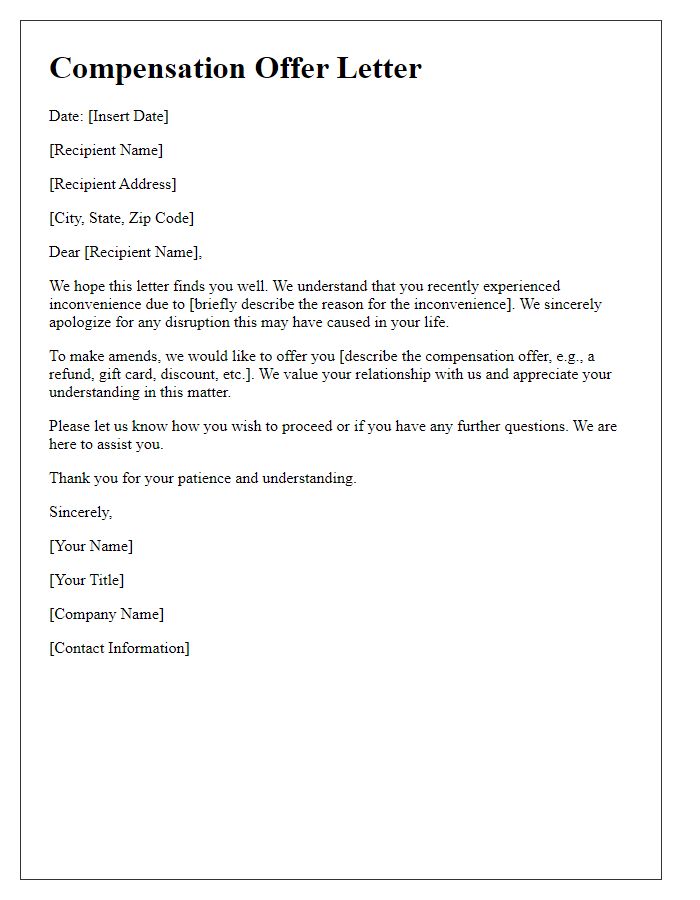When you receive a customer complaint, crafting a thoughtful response can turn a negative experience into a positive one. It's essential to acknowledge their concerns and express genuine empathy, ensuring they feel heard and valued. Highlighting the steps you'll take to address the issue not only builds trust but also reinforces your commitment to customer satisfaction. Interested in learning how to structure an effective letter to respond to complaints? Read on to discover our detailed template and tips!

Personalization
Personalized customer service responses can significantly enhance customer satisfaction and loyalty. Tailored communication should address specific issues raised by the customer (for example, a faulty product or delayed service). Mentioning the customer's name, location, or order number can create a sense of connection, making the interaction feel more human. Acknowledge the specific complaint, such as poor product quality from a recent purchase or difficulties faced with customer support, and provide a solution or compensation, like a refund or replacement. Additionally, emphasizing the company's commitment to quality and customer care can reassure the customer of their importance and foster trust. Depending on the complaint, suggesting a follow-up call or offering an exclusive discount on future purchases can further personalize the experience and encourage continued patronage.
Empathy
Customer complaints about service quality can arise from various experiences, such as long wait times or product defects. Acknowledging feelings of frustration can be crucial in addressing the issue. Demonstrating empathy helps to build rapport and trust. This can include recognizing the value of the customer's time or their disappointment with purchased items. Specific phrases, such as "I understand how important this is to you," can reinforce this connection. Transparent communication regarding steps taken to resolve issues fosters positive relationships, enhancing customer loyalty and satisfaction.
Resolution statement
Customer complaints require careful resolution communication to maintain satisfaction. Clear acknowledgment of the issue (such as delivery delays, product defects, or service shortcomings) is essential. Specify rectification measures, like expedited shipping timelines for faulty orders or compensation offers (including refunds or store credits). Include a timeline for resolution, emphasizing commitment to customer care. Use personalized touches, such as referencing the customer's name or specific purchase details, to enhance engagement. Follow up post-resolution to ensure satisfaction, reinforcing the dedication to high-quality service and customer loyalty.
Apology
A prompt and sincere apology can significantly enhance customer satisfaction and resolution of complaints. Acknowledgement of the issue faced, such as long wait times or product defects, demonstrates understanding of customer concerns. Providing a brief explanation or context, such as unexpected demand surges or supply chain disruptions, helps customers feel informed. Offering a tangible solution, such as refunds, replacements, or discounts, further emphasizes commitment to rectifying the experience. Additionally, ensuring follow-up communication reaffirms dedication to improved service, enhancing the relationship with the customer.
Contact information
Effective customer support relies on prompt responses to complaints, ensuring customer satisfaction and loyalty. Contact information serves as the essential bridge between customers and support teams. Typically, customer service numbers, email addresses, and live chat links streamline communication, helping to resolve issues swiftly and efficiently. For instance, a dedicated support line available from 8 AM to 8 PM, such as a toll-free number (e.g., 1-800-555-0199), allows customers to reach trained representatives familiar with company policies and product details. Alternatively, contact forms on official websites can provide a structured way for customers to submit problems and receive timely follow-ups. Accurate and easy-to-access contact information fosters trust and encourages feedback, vital for improving service quality.
















Comments